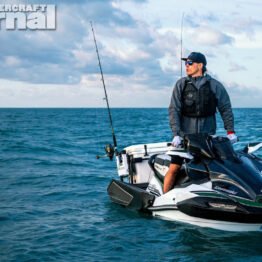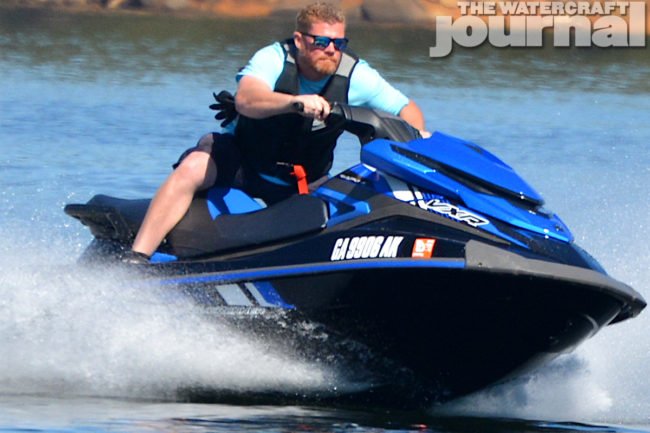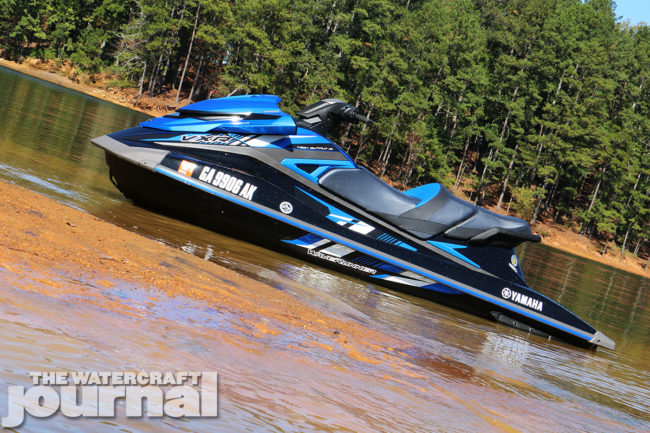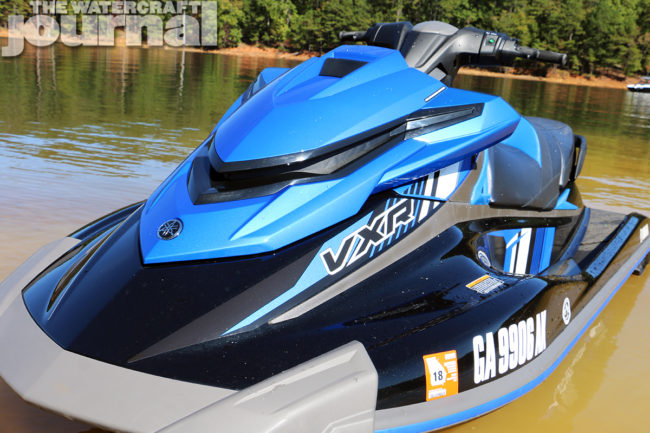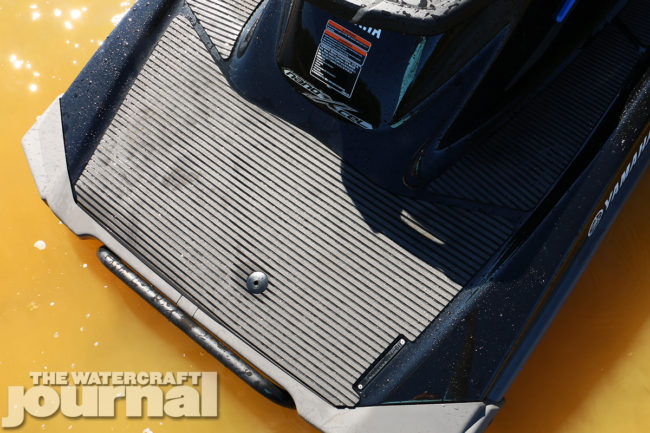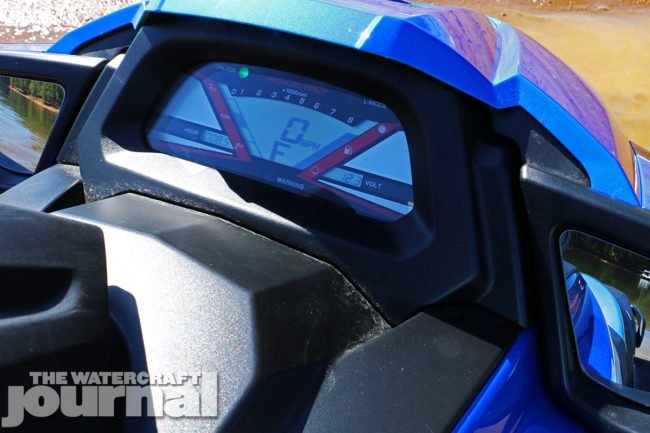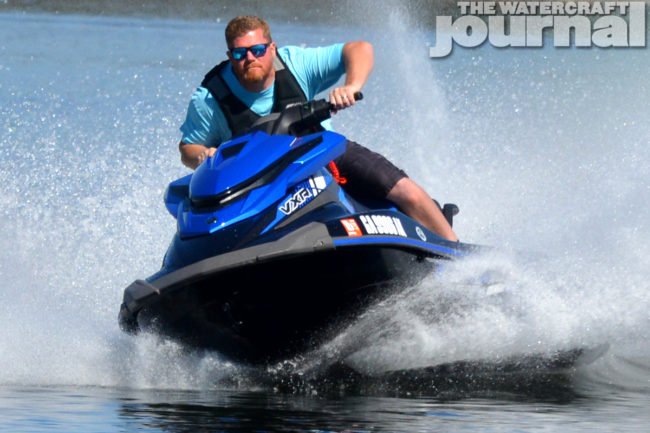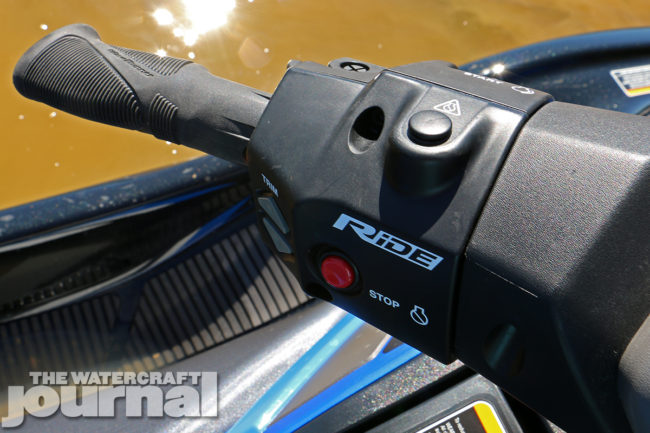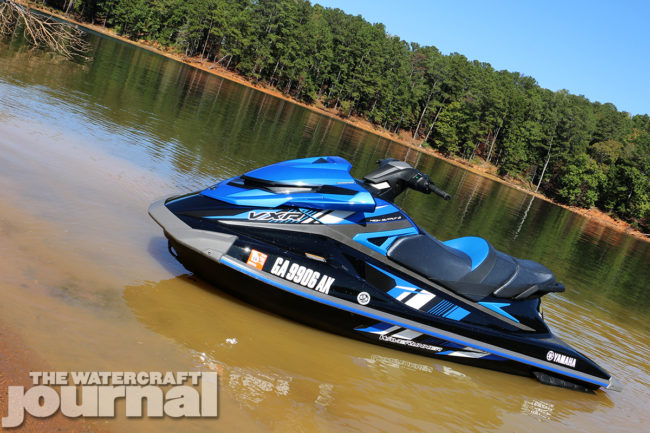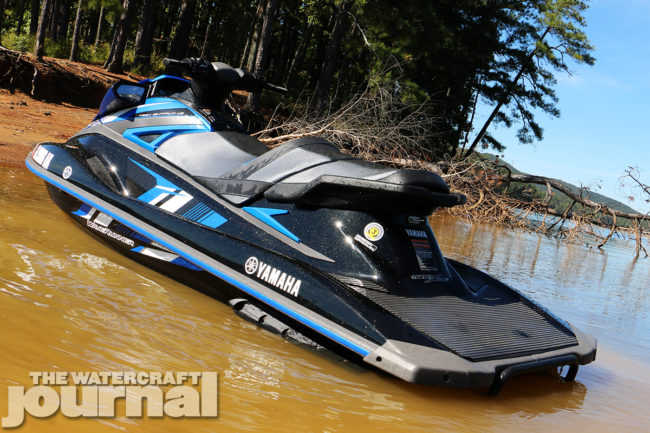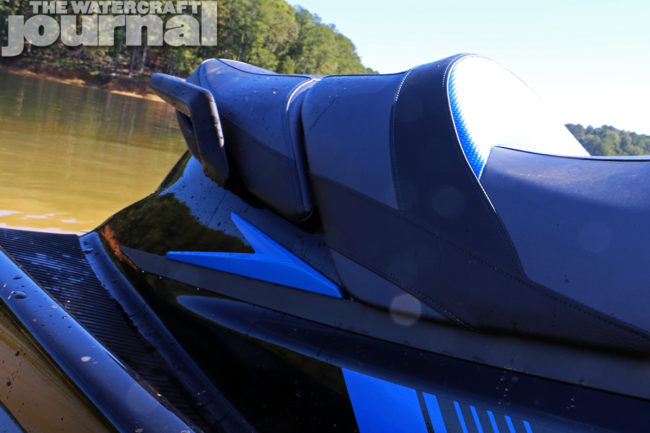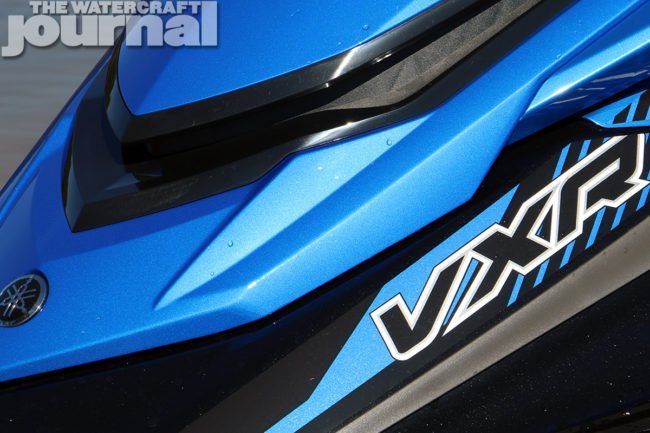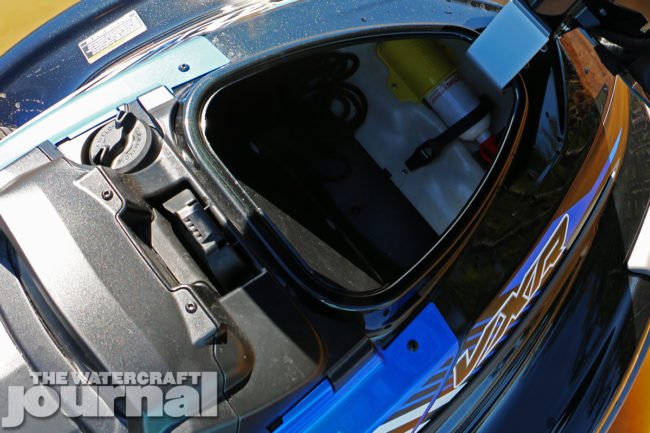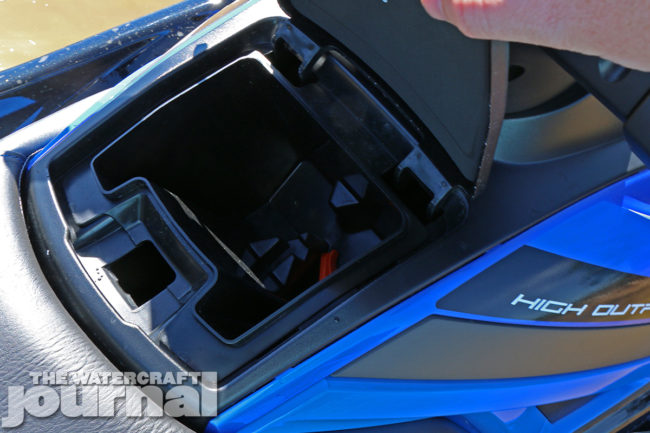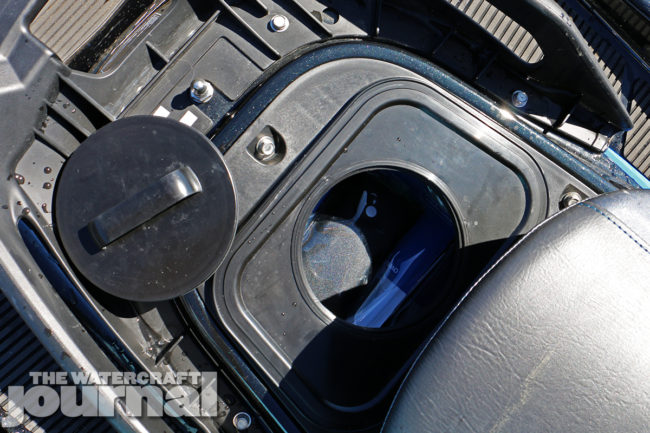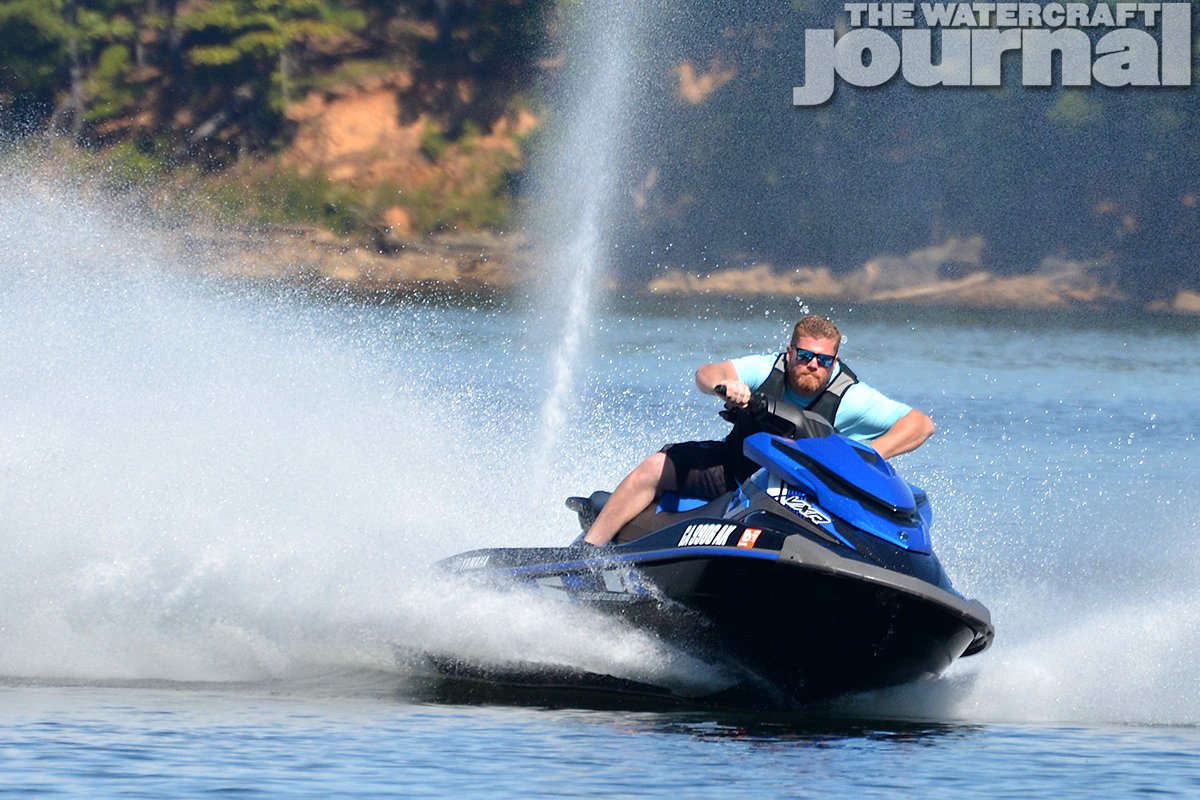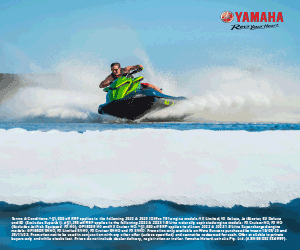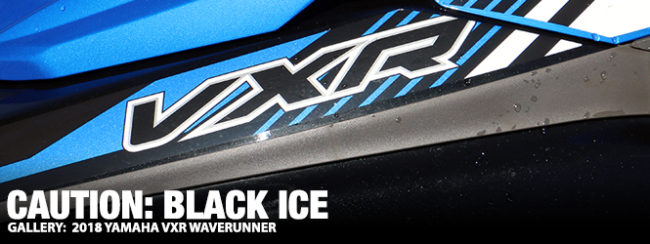
“Well, this sucks.” I groaned, trying to wash the ocher-red mud from the footwells. Georgia’s Lake Allatoona is one of the most striking in America’s lower 48 states that I’ve had the pleasure of riding, especially today. Choosing a mid-week test session was a brilliant idea, as boat traffic was almost non-existent. Temperatures lingered in the low-60’s and winds almost non-existent, leaving the winding lake perpetually still, save for one inky-black and brilliant blue WaveRunner slicing a white plume in its wake. The iron-rich ruddy shores tracing the ivy-green water are topped with dense green foliage and tall, rod-straight pines. So much of Georgia, Alabama and Tennessee is painted in these colors, and its no wonder that boating in the Southeast qualifies as therapy for the soul. That is, except for one thing: the mud gets everywhere.
After finding a secluded shore and spending close to an hour photographing our steed for the day, a brand-new 2018 Yamaha VXR Waverunner, my black riding boots were stained red and caked with mud. Despite my best efforts, reboarding the VXR flung the red goop across the WaveRunner’s Black Metallic and Azure Blue Metallic paint and decals, impregnating the two-tone Hydro-Turf traction matting, and pooling in the shallow footwells. The ski, being as stealthy and slick-looking as any machine to have left a showroom, looked as if I had taken it mud-bogging. Wadding in the water around the ski had churned up the lake bed, tinting the water’s green into a sickly orange. Thankfully, with a few quick flicks of the VXR’s fly-by-wire throttle to clear the pump, and we were free and clear.
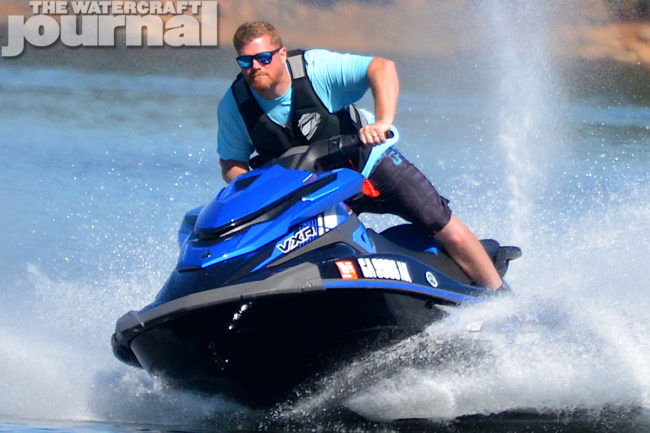
Admittedly, today’s ride was mainly for me. Little has changed for the VXR since its redesign in 2015. The same 1,812cc (1.8-liter) naturally-aspirated High Output 4-cylinder four-stroke powering the VXR, and its adjoining 155mm high-pressure, multi-vane pump pushes out enough thrust to propel the machine deep into the 50’s. With a lighter rider and a few less gallons in its 18.5-gallon fuel tank, the numbers would creep into the 60’s. The VX series hull and deck, from which the VXR is derived, varies from the rest of the segment only by its material – NanoXcel – as opposed to the denser FMC found on lesser VX models, and the lighter NanoXcel2 used exclusively on the GP1800, which shares the same shape and design as the VXR and aforementioned remaining VX machines. (I swear that’s not a run-on sentence.)
In fact, the hull has proven to silence naysayers time and time again, as the GP1800 sauntered to the top of more podiums in 2017 than any other runabout, whether in closed course or grueling offshore conditions. For its part, the VXR has fared nearly as successful, earning a roster of wins in naturally-aspirated classes as well. Simultaneously, the VXR has remained a successful entry point into Yamaha’s race-ready Performance lineup not only for racers, but recreational enthusiasts as well. Priced at $11,999, the VXR comes in $2,000 below the GP1800’s asking price of $13,999, noting the central differences being the lighter NanoXcel2 build material, SVHO (Super Vortex High Output) supercharged engine, intercooler and larger 8-vane 160mm pump.

Its slippery hull skimmed over the lake’s unbroken surface with ease, allowing ultimate rider input; lean heavy over the rail to the left, and the ski responds in kind. Drop a knee into the footwell and snap the bars to the right, and the VXR slingshots around a hairpin like a slot car. Equipped with Yamaha’s electric trim, up-and-down toggles direct the nozzle accordingly. Because the VXR shines so brightly when cornering, the trim was almost perpetually set low. These runabouts handle on their nose, and giving it the trim they crave (Trim! It’s what runabouts crave!) is how to eke the best cornering out of them. The whole top deck is narrow, from the below the handlebars back to the third passenger grab handle. The seat still feels wide compared to Sea-Doo’s new commitment to ergonomic saddles, but nothing like a full-sized Kawasaki that can feel like a medical examination table to some.
Like all VX-series Yamahas, the steering neck is fixed with a padded, rubberized cowl and cool flat-sided pistol-inspired hand grips. The gauge cluster is a modest LCD affair with a blend of numerical readouts and scrolling bars reading fuel, trim and RPM as the speedometer calls out to the rider from center stage. In fact, so much of the VXR is left uncluttered. A solitary glove box features molded-in cup holders; beneath the rear passenger bunk is a drop-in storage bin and a screw-top lid; flip open the unsprung hood (that locks up vertically) and reveal a tight front bin. All of which adds up to a 24.6 gallons of storage. A wide, folding swimstep retracts into place when not in use, and a single stainless tow eye glimmers beneath the shadow of the reboarding grip in back. Wanting bells and whistles? Look elsewhere, bub.
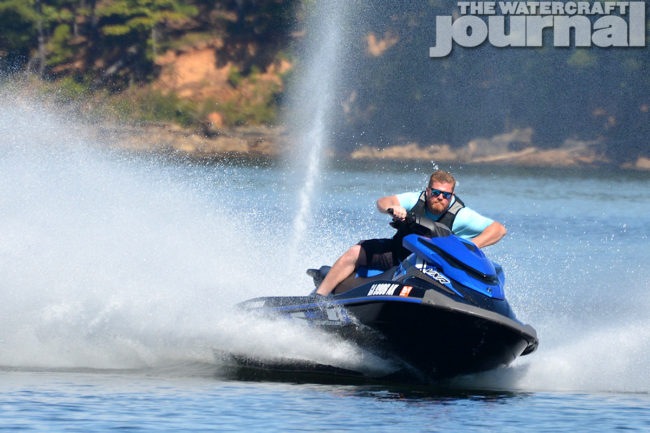
Of course, the greatest addition to the VXR still remains RiDE; Yamaha’s answer to Sea-Doo’s brake and reverse system. The dual-throttle mechanism employs the left hand lever as a throttle, not a gear shift. When idling at a dock, a rider can aptly reverse their way clear without the use of the right hand throttle lever completely. Just think: right hand forward, left hand reverse. Admittedly, Yamaha has done its homework since RiDE’s debut, and the system is far more measured and intuitive than my first impression so many years ago. Now, throttle comes on smooth and linear. When accelerating forward, the 1.8L digs down deep and unspools a torque curve unrivaled by other naturally-aspirated watercraft. Again, the VXR’s stellar power-to-weight ratio shines (767-pound dry weight) here, and makes this machine an all out thrill to ride every time.
The VXR falls into an interesting segment; if you’re the young father looking for a family toy, I still say the VX Limited and its virtual catalog of included accessories is the way to go. If you’re a budding racer or looking to be the fastest guy on the lake; then the GP1800 is definitely the right choice. But if your kids are a little older, and you’re still looking for a fun ride that can still tow a raft fast enough to “crack the whip,” then the VXR is a sure-fire hit. I still carry a special place in my heart for the Yamaha VXR WaveRunner; it might be because without fail Yamaha reserves its most aggressive paint schemes for it (in addition to the black-and-blue, is a Black Metallic with Matte Carbon – with blazing red highlights) to choose from. It’s an interesting ride; dry and comfortable when you want to cruise it, and arm-stretching and soaking wet when you’re out for blood. This machine is a fun one for sure.







